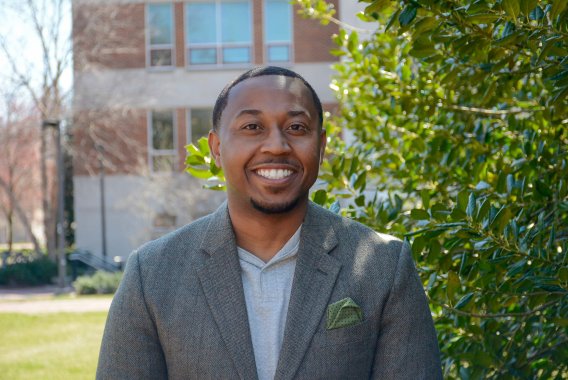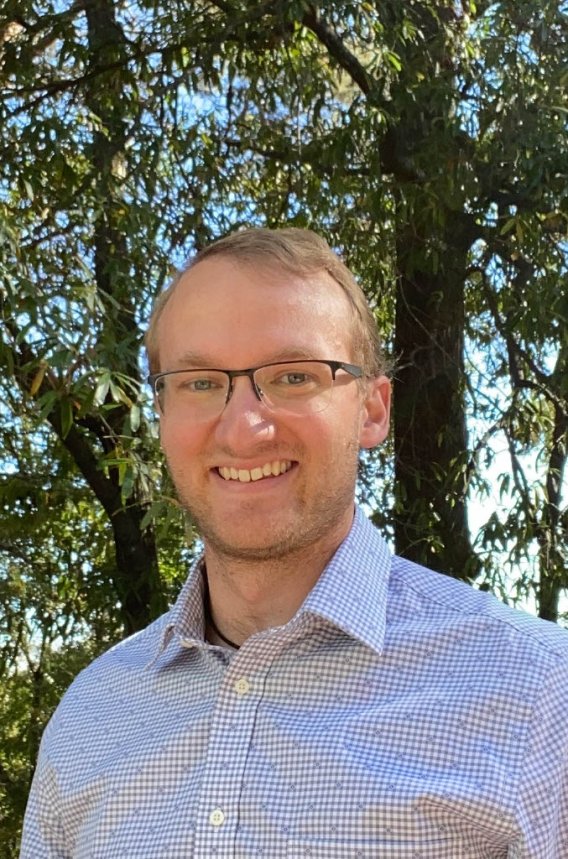Lorenz G. Straub Award Ceremony with Distinguished Lecture by Prof. Marccus Hendricks
Join us on Tuesday, November 29th at 3pm for a celebration of the 2021 Lorenz G. Straub Award recipient Dr. Andrew Feldman, with a distinguished lecture by Prof. Marccus Hendricks.
Marccus Hendricks, Associate Professor of Urban Studies and Planning and the Director of the Stormwater Infrastructure Resilience and Justice (SIRJ) Lab at the University of Maryland
Distinguished lecture: Socio-Physical Infrastructure and Environmental Risks: People, Pipelines, and Pathways
Abstract: The impact of hazard exposures such as stormwater runoff is rarely evenly felt across a community. Neighborhoods of color, particularly of low-wealth, will often face worse stormwater problems especially in the era of climate change; with more frequent and intense stormwater runoff. Dr. Marccus Hendricks will discuss the equity and environmental justice issues related to stormwater infrastructure planning that result in vulnerable systems, leading to everyday challenges in stormwater, urban flooding, and other environmental risks. Specifically, he will examine conceptual frameworks and contextualize what it means for physical systems to operate in a social world. He will describe several ongoing studies where his lab investigates a number of risks at the nexus of stormwater, infrastructure, resilience, and environmental justice. Furthermore, he will discuss pathways forward that integrate justice and participation into the inspection and improvement of community spaces, particularly in marginalized areas.

About the speaker: Dr. Marccus Hendricks is a recently tenured Associate Professor of Urban Studies and Planning and the Director of the Stormwater Infrastructure Resilience and Justice (SIRJ) Lab at the University of Maryland. His other appointments at the university include the Department of Civil and Environmental Engineering and the Maryland Institute for Applied Environmental Health. He holds a Ph.D. in Urban and Regional Science and a Master of Public Health, both from Texas A&M University. To date, he has primarily worked to understand how social processes and development patterns create hazardous human-built environments, vulnerable infrastructure, and the related risks in urban stormwater management and flooding. Other work has focused on technological disasters, namely fertilizer explosions, and cascading events such as wet- weather events that overwhelm sanitary sewers and cause overflows, household backups, and contamination. His work emphasizes participation and action that uses methods including photography, visual inspection, and environmental sampling.
Hendricks’ research has been published in several journals including the Journal of the American Planning Association, Journal of Planning Education and Research, American Journal of Public Health, Environmental Justice, Journal of Infrastructure Systems, Risk Analysis, Landscape Journal, and Sustainable Cities and Society. In the popular media realm, his work has been covered by or quoted in the Associated Press, CNN, NPR, USA Today, Scientific American, Huffington Post, Baltimore Sun, and, to name a few.
Hendricks received two early-career awards from the National Academies of Science Gulf Research Program and The JPB Environmental Health Fellows Program at Harvard T. H. Chan School of Public Health. More recently, he was named as a 2021 “Fixer” by the media company Grist for their annual Grist 50 Fixer list and has been appointed to Springer Nature’s US Research Advisory Council, the U.S. EPA’s Science
Advisory Board, and by the Biden Administration as an author on the human social systems chapter of the U.S. Fifth National Climate Assessment.
2021 Lorenz G. Straub Recipient Dr. Andrew Feldman, NASA Postdoctoral Program Fellow at the NASA Goddard Space Flight Center
Doctoral thesis: Soil-Plant-Atmosphere Coupling during Interstorm Periods
Abstract: The future trajectory of net terrestrial carbon uptake and agricultural yields are dependent on how vegetation responds to climate forcings. However, characterizing vegetation responses to water stress and other environmental drivers is challenging because these forcing factors are inter-related, especially on seasonal timescales. Here, recently available global mapping measurements from microwave satellite sensors are used to characterize water exchange in the soil-plant-atmosphere continuum. These satellites enable evaluation of time evolution of landscape-scale plant water content during interstorm periods, providing insights into underlying mechanisms and allowing disentangling of their drivers. My thesis asks: what are the fundamental landscape-scale plant responses to rainfall events and interstorm drying? With a focus on soil-plant hydraulics in this presentation, I’ll more specifically ask: at what timescale do plants take up water after a rain event and why?
Following soil moisture pulses in wetter global locations, rapid soil-plant water coupling occurs as expected under pre-dawn soil-plant equilibrium. By contrast, in global drylands, plant water content commonly increases over multiple days after pulses. Longer dryland plant water content increases (> 3 days) are attributed to rapid growth, providing evidence for a long-standing ecological hypothesis. In contrast, shorter (1-3 day) plant water increases under dry conditions are due to slow plant rehydration, ascribed here to high soil-plant resistances using a plant hydraulic model. These results together suggest that intermittent pulses of water availability have the strongest influence on dryland vegetation. However, responses extend across climate gradients implicating widespread sensitivity to rainfall timing.

About the recipient: Andrew Feldman is a NASA Postdoctoral Program Fellow at the NASA Goddard Space Flight Center located in Greenbelt, MD. He works primarily with Ben Poulter on carbon cycle science in the Biospheric Sciences Laboratory. He is a hydrologist who studies the coupling of the terrestrial water, carbon, and energy cycles mainly using satellite remote sensing platforms across optical, thermal, and microwave frequencies. Andrew is also a new member of the NASA ECOSTRESS Science Team. Prior to joining NASA, Andrew was a graduate research assistant at Massachusetts Institute of Technology, Cambridge, MA, where he received S.M. and Ph.D. degrees in hydrology in the department of civil and environmental engineering in 2018 and 2021, respectively. At MIT, he worked with Prof. Dara Entekhabi. He also completed his bachelor’s and master’s degrees in civil engineering from Drexel University in Philadelphia, PA in 2016.
